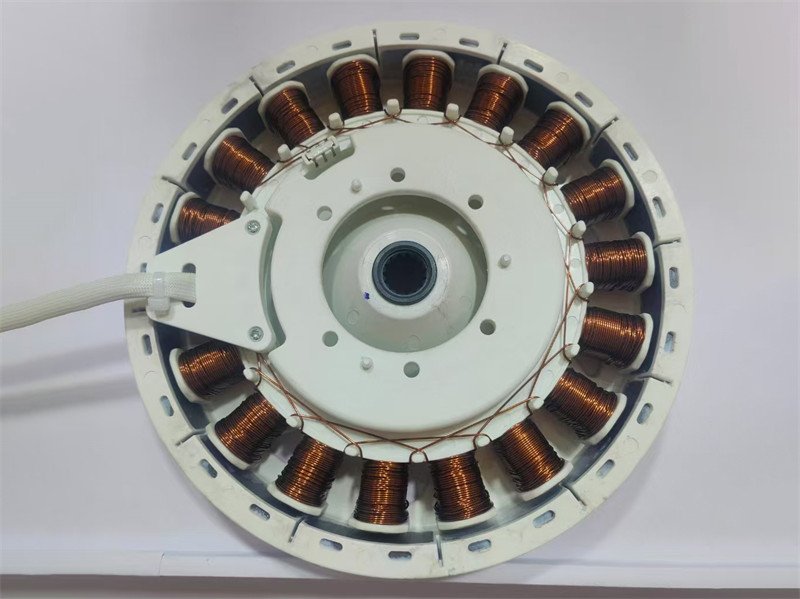For the problem of wire arrangement and speed optimization of the motor stator automatic winding machine, we can take comprehensive measures from multiple dimensions such as equipment hardware, control algorithm, process parameters and system integration. The following is a detailed interpretation and optimization suggestions of Vacuz on the relevant content, I hope it can help everyone!

1. Equipment hardware optimization
1. Upgrade of wire arrangement mechanism design
a. High-precision screw guide: A combination of ball screw and linear guide is used to ensure that the positioning error of the wire arrangement device is controlled within ±0.01mm during high-speed movement.
b. Dynamic response optimization: The structure of the wire arrangement device is optimized through finite element analysis, the inertial mass is reduced, and the acceleration is increased to more than 1.5G to meet the needs of high-speed start and stop.
c. Adaptive adjustment of wire nozzle: Using a wire nozzle made of ceramic or tungsten carbide, with pneumatic or electric fine-tuning mechanism, the change of wire diameter is compensated in real time to ensure the accuracy of wire arrangement.
2. Drive system upgrade
a. High power density servo motor: Select a servo motor with a rated speed of not less than 3000RPM to achieve micron-level positioning accuracy.
b. Direct drive technology: Use a torque motor on the winding spindle to eliminate mechanical transmission errors and increase the speed to more than 5000RPM.
2. Control algorithm optimization
1. Wire arrangement algorithm optimization
a. Spiral trajectory planning: Establish a three-dimensional mathematical model based on the stator slot type, and use a non-uniform rational B-spline algorithm to generate a smooth wire arrangement path to reduce the bending stress of the wire.
b. Speed look-ahead control: Slow down in advance at the corners of the path to avoid the occurrence of wire throwing out or overlapping due to centrifugal force.
c. Dynamic calculation of slot full rate: Real-time monitoring of the number of wound turns, and adjustment of the wire arrangement spacing through closed-loop feedback to ensure the uniformity of the slot full rate.
2. Motion control algorithm optimization
a. S-type acceleration and deceleration curve: The seven-segment S-curve is used to plan the speed trajectory, and the acceleration change rate is controlled within a reasonable range to reduce mechanical shock.
b. Vibration suppression algorithm: Based on the modal analysis results, a notch filter is injected at the key frequency point to reduce the impact of resonance on speed stability.
c. Thermal error compensation: The temperature distribution of the motor and the screw is monitored by an infrared thermal imager, a thermal deformation model is established, and the position command is corrected in real time to compensate for thermal errors.
III. Process parameter matching and optimization
a. Wire diameter-speed-tension mapping table: Establish a database of optimal speed-tension combinations corresponding to different wire diameters for quick call.
b. Optimization of slot type-wire arrangement strategy: For different types of slot types, adjust the wire arrangement spacing and the number of winding layers to improve winding efficiency.
c. Idle time compression: Optimize the timing of auxiliary actions such as wire cutting and commutation, reduce idle time, and improve production efficiency.
IV. System Integration and Debugging
1. Intelligent Monitoring and Self-diagnosis
a. Deploy machine vision system to monitor the arrangement status of wires in real time and improve the accuracy of defect detection.
b. Integrate multi-source sensors to predict equipment failures through machine learning algorithms and perform maintenance in advance.
2. Process Database and Adaptive Optimization
a. Establish a database containing a large number of process parameters to support fast parameter matching based on stator models and wire specifications.
b. Introduce reinforcement learning algorithms to automatically adjust parameters such as wire arrangement speed and tension according to real-time production data to achieve adaptive optimization.

Through the implementation of the above measures, we can optimize the wire arrangement and speed problems of the motor stator automatic winding machine. These optimization measures not only improve the production efficiency and product quality of the equipment, but also inject new vitality into the development of the enterprise.
Correo electrónico: sales@vacuz.com [fusion_form form_post_id=”431″ margin_top=”” margin_right=”” margin_bottom=”” margin_left=”” hide_on_mobile=”small-visibility,medium-visibility,large-visibility” class=”” id=””][/fusion_form]

